Post-Hurricane Report: How Are the Birds?
Last update: October 5, 2017
People continue to suffer across the Caribbean, Puerto Rico, and the southern United States as the impacts of Hurricanes Irma and Maria linger. At American Bird Conservancy, our hearts go out to everyone affected by these storms.
One question we continue to hear from our community is “How are the birds?” While it's difficult to gauge exactly how each species is faring at this early stage of recovery, we've pulled together a list of some of the bird species that may have been impacted, focusing mostly on those of conservation concern that are top-of-mind for us.
We're relieved to report that Barbuda Warbler and Puerto Rican Parrot have survived the storms; read on for details.
Updates on Birds of Concern
American Flamingos. Good news: The island of Inagua in the Bahamas is again teeming with thousands of flamingos. Bahamas National Trust reported that many of the islands' breeding colony of more than 50,000 birds have returned. Thousands of flamingos appear to have evacuated the island prior to the hurricane, while smaller numbers of flamingos survived by taking shelter in mangroves. Sadly, flamingos in the Cayo Coco Cays of Cuba were not as fortunate. Thousands of deaths have been reported there.

Bahama Oriole by Daniel Stonko
Bahama Oriole. One of our major concerns is the Bahama Oriole, a critically endangered species found only on the island of Andros in the Bahamas. After Irma, our partner with the Bahama Oriole Project, Kevin Omland, reported that the habitat had weathered the storm fairly well. Continued monitoring of the population in 2018 will help us confirm if the birds survived subsequent storms as well; we are hoping they did.
Bahama Parrot. Bahamas National Trust reported that more than 100 Bahama Parrots have been sighted post-Irma. Only two viable breeding populations exist: one on the island of Inagua and the second in Abaco, within Abaco National Park. It's good news that some of these birds survived. We're optimistic that additional reports will show that larger numbers of the parrots are alive and well.
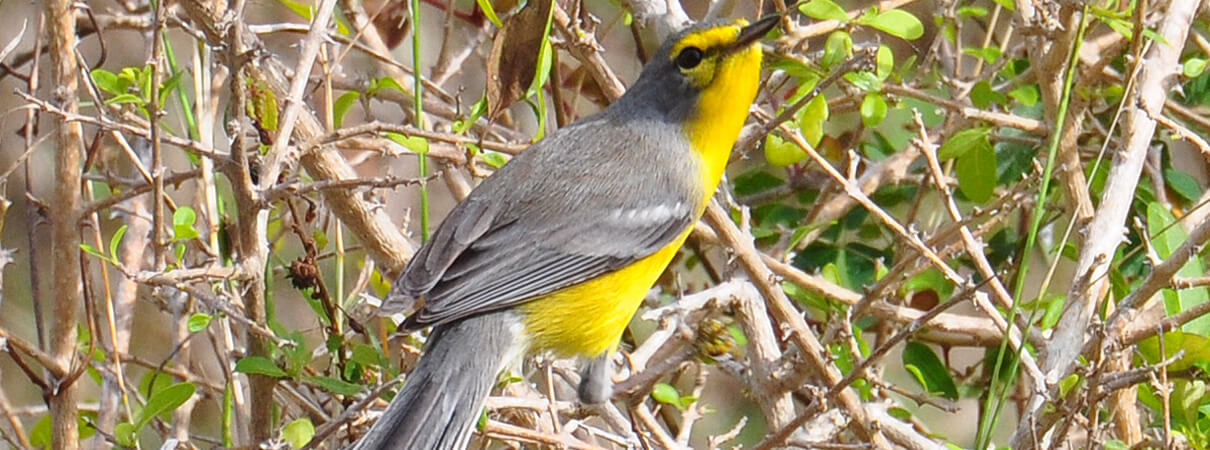
Barbuda Warbler by Justin Dutcher
Barbuda Warbler. Hurricane Irma brought terrible destruction to the island of Barbuda. Our partner BirdsCaribbean reported that habitat destruction on the island was near-complete, leaving very little vegetation that might provide shelter for birds. Many of us feared the possible extinction of Barbuda Warbler, which numbered fewer than 2,500 individuals before the storm.
Just today, we received spectacular news from BirdsCaribbean: Eight of the birds were sighted on the island! A team from Environment Awareness Group (EAG) and the Department of the Environment made the discovery on Sept. 22; additional surveys and conservation plans are in the works. Read more from BirdsCaribbean.
Black-capped Petrel. Black-capped Petrels nest on the island of Dominica, which suffered damage from both Irma and Maria. At this point, we don't yet know what effects this storm had on the habitat of this rare species. Our partner in Black-capped Petrel conservation, Environmental Protection in the Caribbean (EPIC), lost critical infrastructure – their office, staff housing, and vehicle – on the island of St. Maarten to Irma. We also know via eBird reports that Black-capped Petrels were displaced by Irma and showed up far from their normal at-sea foraging grounds, with reports from inland Florida, Georgia, and Tennessee.
Other rare birds of Dominica potentially impacted by Maria are Imperial Parrot (endangered) and Red-necked Parrot. As of Oct. 1, there is good news about the latter species. The Rare Species Conservatory Foundation reported, "We were able to speak with Forester Stephen Durand for a few moments last night. All the birds that were housed in the Aviary in Roseau are doing well. The exterior flights are serviceable and the birds are now out of their crates. There have been sightings of Red-necked Amazons flying in the area. [Imperial Parrot] have always been incredibly difficult to see even in the best of times, so we are not expecting to hear about Imperial sightings at this time. Stephen is assured us that as soon as possible there will be Forestry assessments and we will keep you posted as soon as we hear more. … It should be noted that the Forestry headquarters were severely damaged and are completely offline at this time." Follow RSCF on Facebook for updates.
Grenada Dove. This critically endangered species is the island of Grenada's only endemic bird. Coastal dry thorn forests are the sole habitat for the 250 or fewer remaining birds. Given the paths taken by Irma and Maria, we suspect that impacts here were limited, unlike the direct hits the island took in 2004 and 2005 from Hurricanes Ivan and Emily.
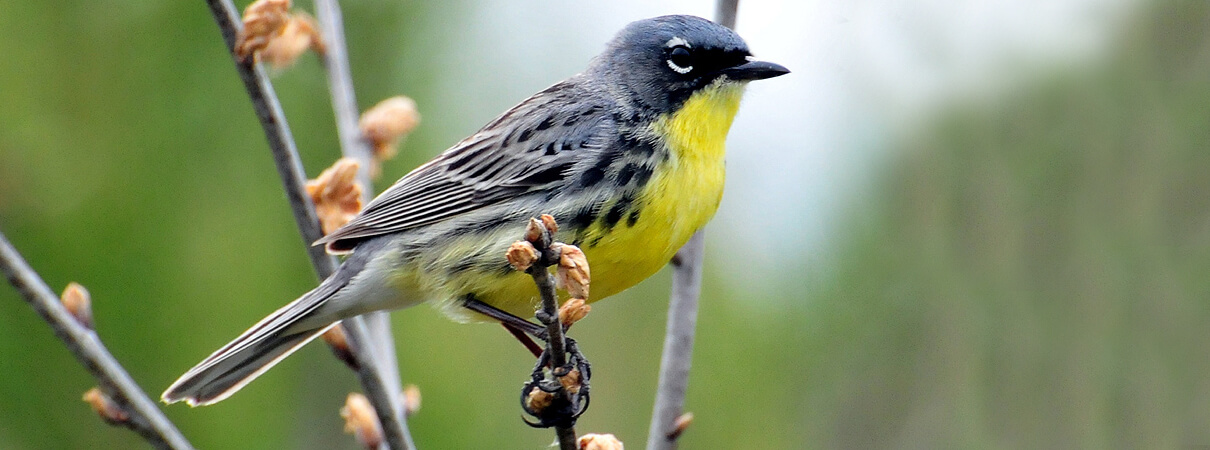
Kirtland's Warbler, photo courtesy of USFWS
Kirtland's Warbler. Timing seems to have been on the side of this endangered migratory bird: Most Kirtland's Warblers don't arrive on their wintering grounds in the Bahamas until October or November, after hurricane season.
Dave Ewert of The Nature Conservancy, a Kirtland's Warbler expert, reported, “The islands most used by wintering Kirtland's Warblers (Eleuthera, San Salvador, Long Island, Cat Island) did not receive much hurricane damage. The secondary effects of hurricanes, including additional rainfall, could positively affect Kirtland's Warblers as food supplies (invertebrates and small fruits) are most abundant after periods with relatively plentiful rainfall. So, this fall's hurricanes probably had little direct effect on Kirtland's Warblers and, depending on how much rain fell in the central Bahamas, could provide relatively good food supplies for the birds upon their arrival.”
Magnificent Frigatebird. The Western Hemisphere's largest colony of Magnificent Frigatebirds – located in Barbuda's Codrington Lagoon – was presumably heavily affected by Irma. “Thousands of birds must have perished,” reported Andrew Dobson, President of Birds Caribbean.
UPDATE on Oct. 2: Frigatebirds have been reported far away from home, with a report from Wisconsin about a bird that is likely a hurricane evacuee.
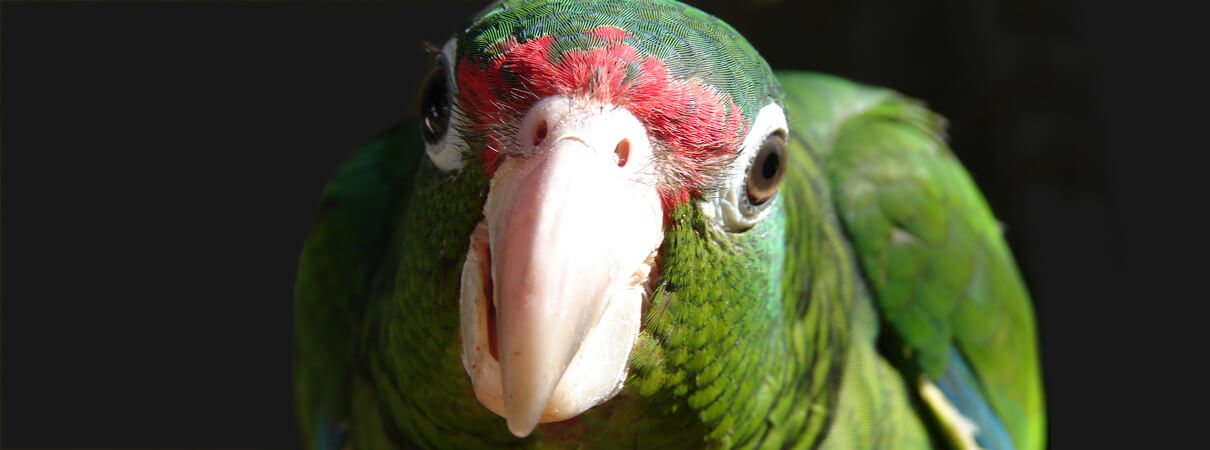
Puerto Rican Parrot by Pablo Torres, USFWS
Puerto Rican Parrot. Puerto Rico remains devastated by the impacts of the recent hurricanes. One bright spot on the wildlife front is the status of the rare Puerto Rican Parrot, which persists in a handful of captive-bred and wild populations. A story published in Newsweek confirms that both captive and at least some wild birds survived Hurricane Irma. One important wild population of the parrot is found in El Yunque National Forest, where the mountainous habitat is reported to be relatively intact. U.S. Fish and Wildlife biologist Tom White stated with optimism that the species will "pull through this quite well."
However, Hurricane Maria hit Puerto Rico harder. Captive birds were sheltered during Maria and are known to have survived. On Oct. 5, we received a report from Dr. Adrianne Tossas (University of Puerto Rico, Aguadilla), that 35 of the 40 free-flying Puerto Rican Parrots of the Rio Abajo population have been re-sighted. Based on the terrible forest loss reported in this story from NPR, the species' persistence seems a fortunate outcome.
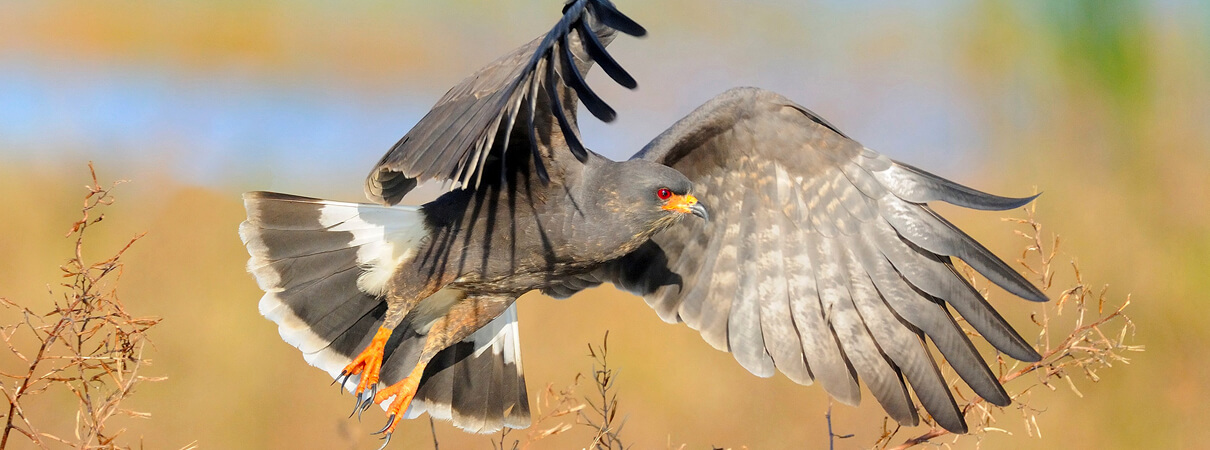
Snail Kite by Rob Stokes, Shutterstock
Snail Kite. Audubon Florida reported that Hurricane Irma destroyed all 44 nests of the endangered Snail Kite around Lake Okeechobe. With only 130 nests state-wide, the birds were already having a bad year, and this setback puts them in a tough position for next breeding season. We are concerned about additional habitat destruction in the Florida Keys and are awaiting more news from southwestern Florida.
Yellow-shouldered Blackbird. Another species found only in Puerto Rico, the Yellow-shouldered Blackbird, numbers only a few hundred individuals. The species' coastal habitats were hard-hit by Hurricane Maria, and we currently have had no update on the birds since the hurricanes. Other endangered birds, including West Indian Whistling-Duck, the Puerto Rican race of Sharp-shinned Hawk, Plain Pigeon, Elfin Woods Warbler, and Puerto Rican Nightjar, are also of concern in the storms' aftermath.
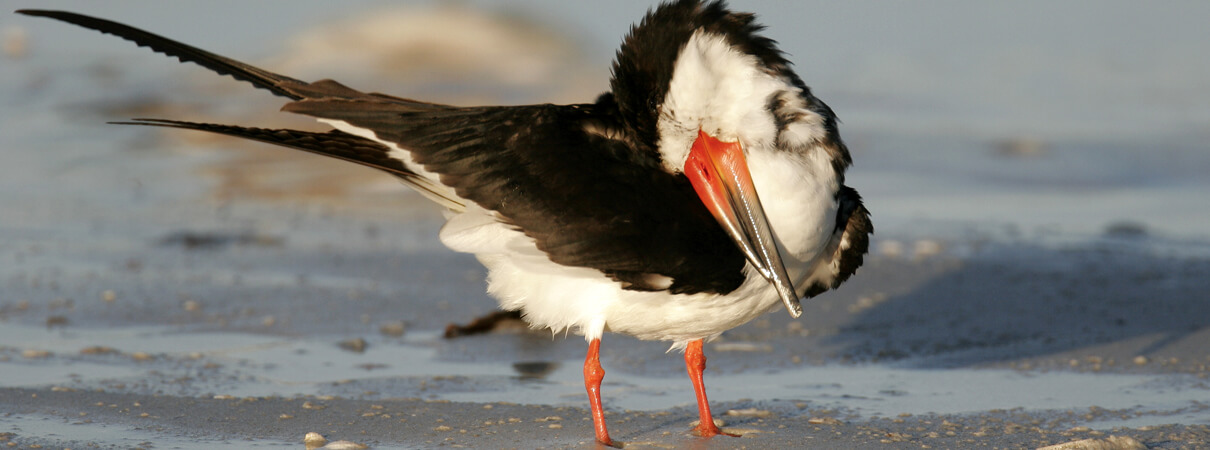
Black Skimmer by Dennis W. Donohue/Shutterstock
Beach-nesting Birds in the Gulf. ABC's own programs in the Gulf were directly affected by the loss of fencing and signage to protect colonies of beach-nesting birds, including Least Terns and Black Skimmers. Some of these coastal habitats experienced significant damage, but it's still too early to quantify the precise bird impacts. Fortunately, this damage occurred outside the breeding season for most species.
We will soon launch an appeal for support to address these needs and to help our Caribbean partners. Global Wildlife Conservation has already generously pledged funds to help with our work to restore birds and their habitats on the Texas coast. (See our update on Texas beach-nesting birds.)
Signs of Hope Post-Hurricane
While the hurricanes wrought heartbreaking damage, there are also signs of hope. As Audubon Florida stated in a post-Irma update, there are “early reports of Burrowing Owls on Marco Island surviving the storm, American Oystercatchers migrating through Northeast Florida, and flightless Brown Pelicans alive in their nests on rookery islands in Tampa Bay.” And all of the Reddish Egrets tracked by Avian Research and Conservation Institute survived Irma, "hunkering down in the places we've come to know as their favorite roosts."
We'll continue to post updates on these species as we receive reports from our staff and partners on the ground. If you have an observation or any additional information on birds affected by the storms, we'd love to hear from you. Send an email to American Bird Conservancy's Clare Nielsen.
Clare Nielsen is ABC's Vice President of Communications. Previously, Clare has worked in communications for Conservation International, the U.S.-Asia Environmental Partnership, C-SPAN, and other nonprofit and for-profit organizations. She holds a B.A. in English from Virginia Tech and has completed graduate-level coursework in ornithology and natural history. Follow her tweets on wildlife gardening: @dailywildmd.


















































